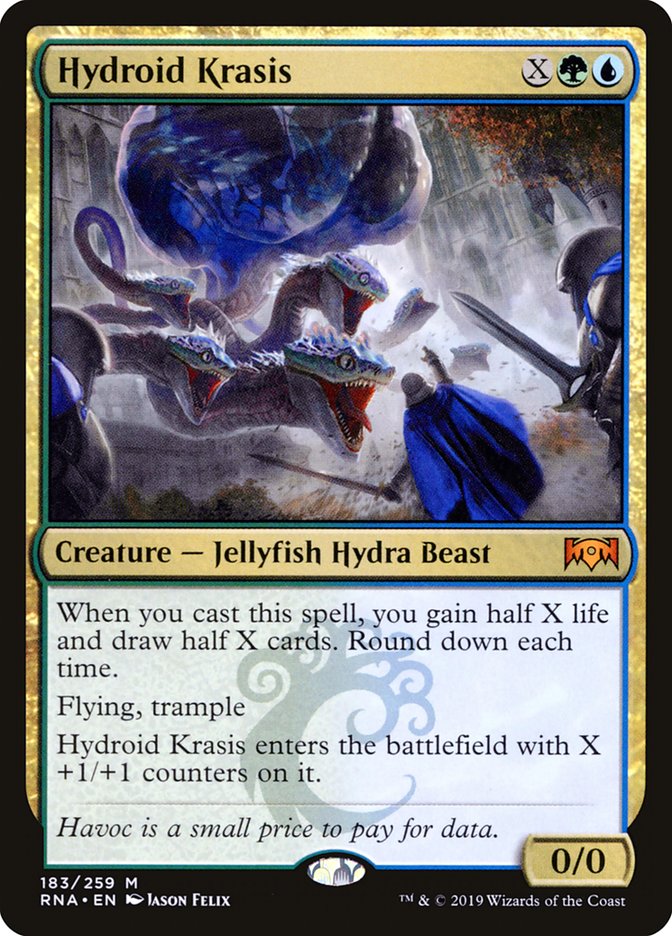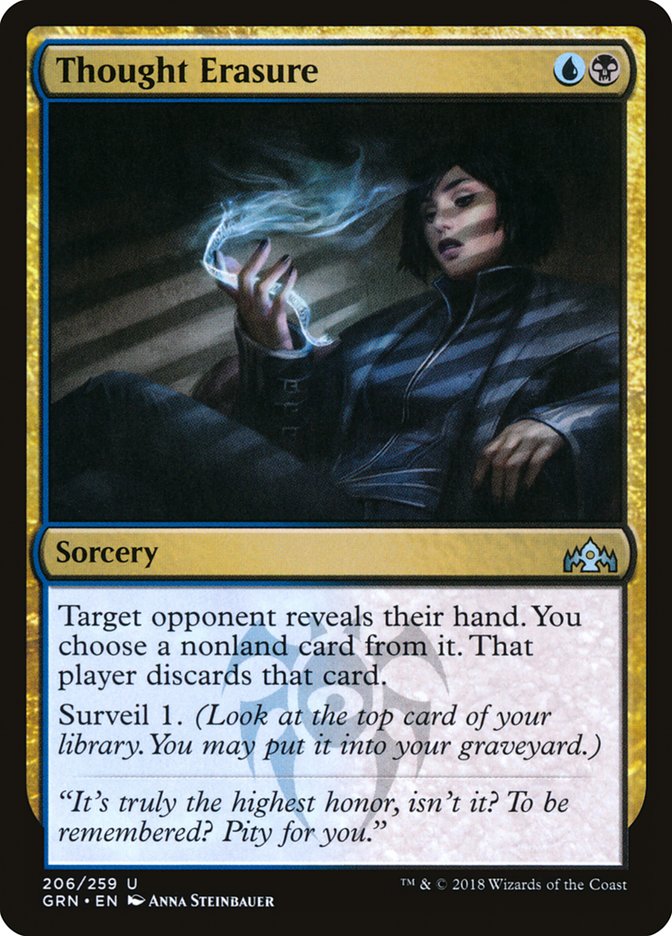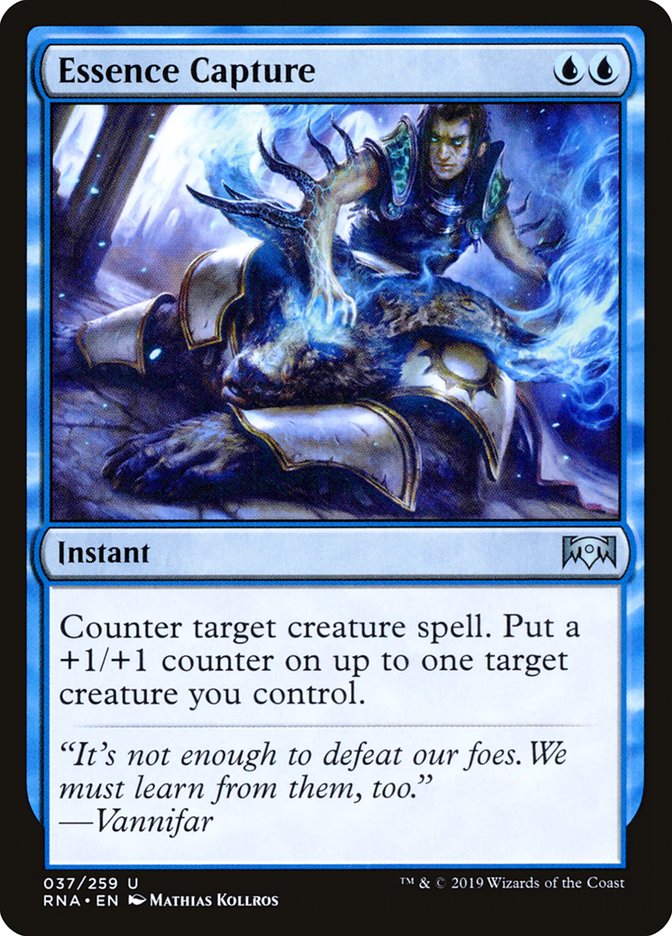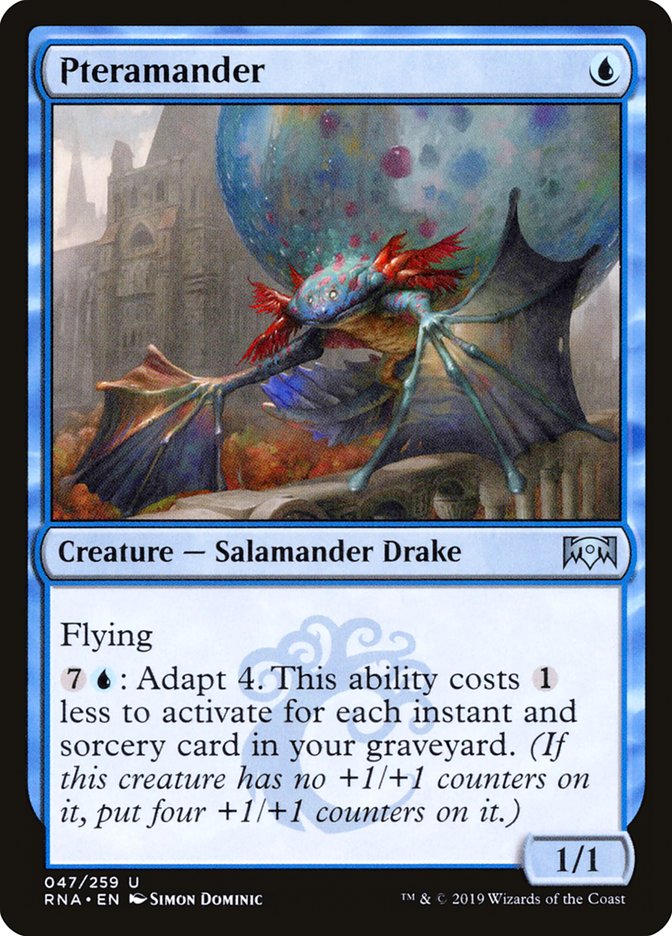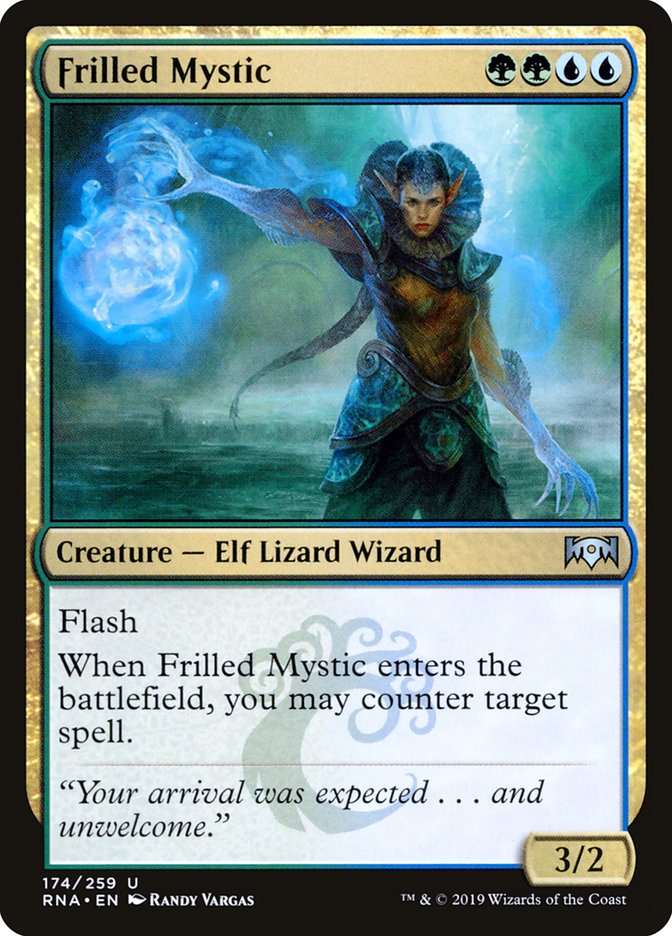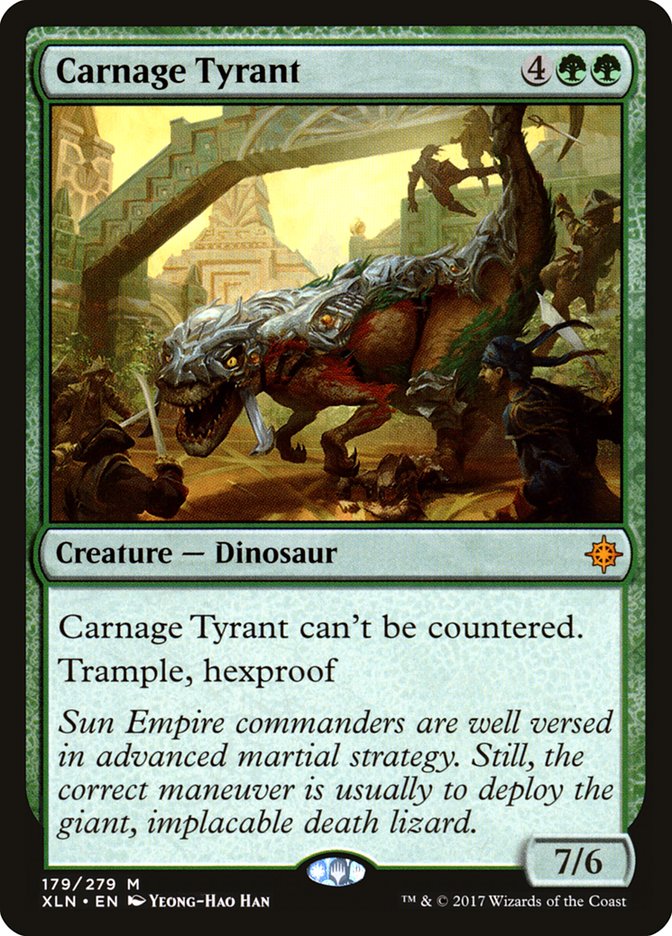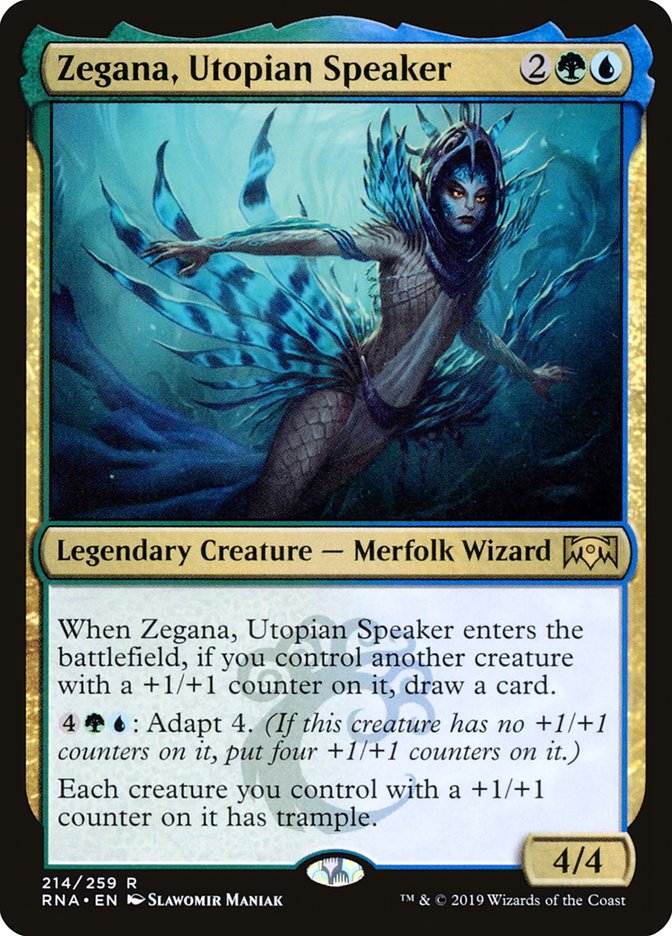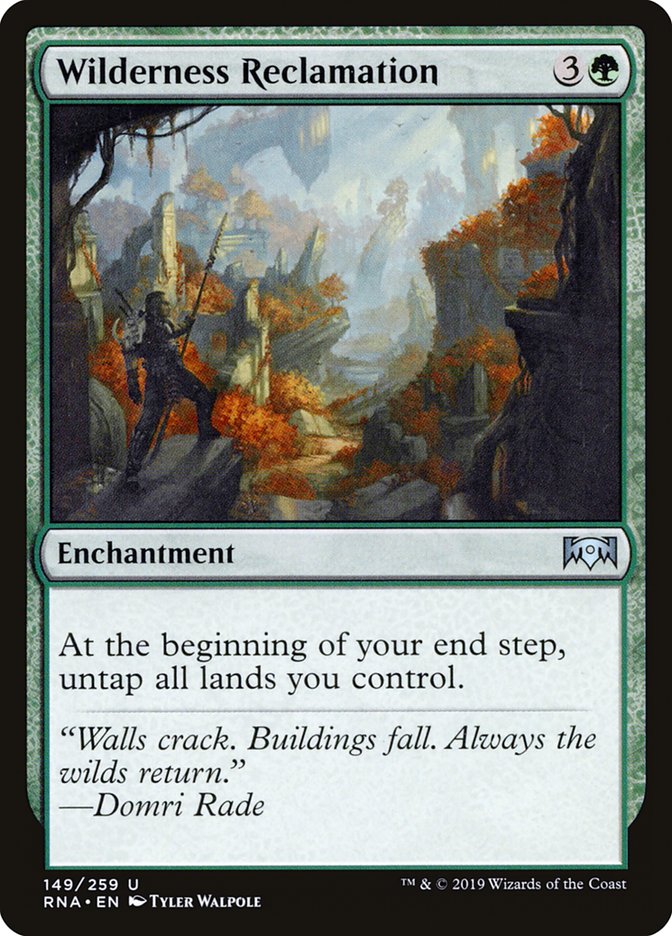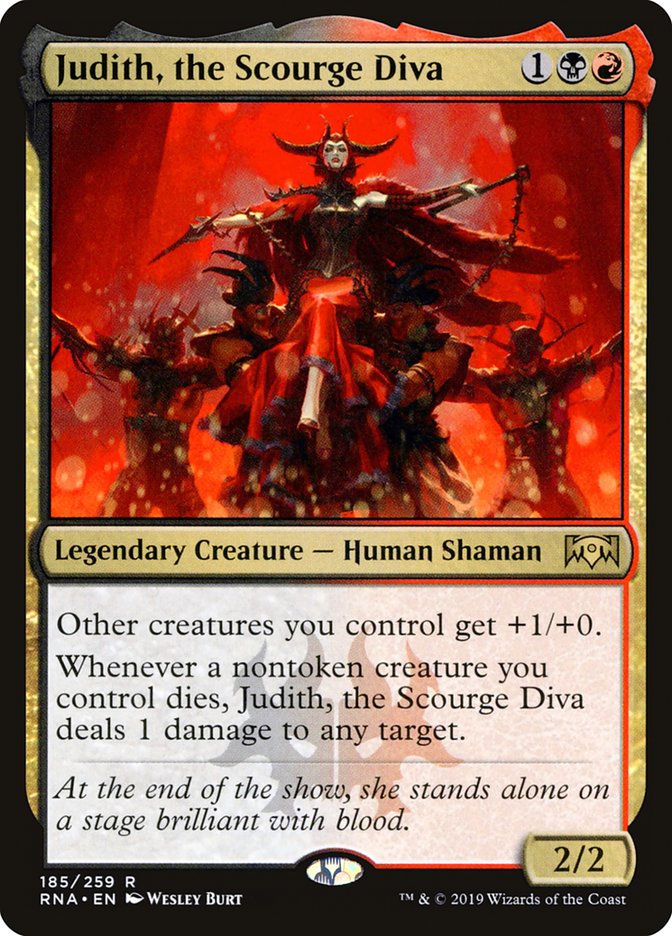It’s a fascinating experience to watch the seeds of a metagame narrative
blossom before your very eyes. I’ve certainly played in my share of week
one Standard tournaments, but this past weekend at SCG Indianapolis I was
granted a whole new way of viewing one of these tentpole events. I had the
good fortune to be part of the commentary team tasked with showing you
exactly what kind of effect Ravnica Allegiance would have on
Standard, and I think it’s safe to say that the impact was immediate and
drastic.
While much will be written here on StarCityGames.com in the coming days
about the state of our new metagame and proper next steps, I wanted to
share a narrower perspective. I watched and discussed a lot of Magic over
the past few days, and during that time it became clear to me that some
individual cards were continually outperforming my expectations, while
others simply looked lost in the face of the rapid change that had swept
the previous format away. I’m going to discuss some of the biggest over and
underperformers from SCG Baltimore in the hopes that you can use this
information to inform your next Standard build. While the wider metagame
analysis is always telling, you still need to decide which cards to
register within a given archetype. It seems one of the hallmarks of a post
Play Design world will be a plethora of reasonable options at every given
spot on the mana curve. Hopefully this article is your starting point for
choosing the correct cards to prop up whatever strategy you settle upon.
Overperformers
While this inclusion scores close to absolute zero on the hot take meter,
you can’t have any discussion about SCG Indianapolis without mentioning
Hydroid Krasis. The card was everywhere, with approximately 30 of the 68
day 2 competitors including the flying Jellyfish in their builds.
Overnight, consensus was seemingly reached that the Golgari deck that had
dominated last season’s Standard was obsolete and Sultai was the new
midrange king. This adjustment has ripple effects throughout the rest of
the format, and indeed many of my other inclusions in the overperformer
camp earned their slot via positive interaction with Hydroid Krasis.
All future deckbuilding needs to contemplate the existence of this card and
adjust appropriately. The champ is here.
Creatures (26)
- 4 Llanowar Elves
- 2 Carnage Tyrant
- 4 Wildgrowth Walker
- 4 Merfolk Branchwalker
- 1 Seekers' Squire
- 4 Jadelight Ranger
- 2 Ravenous Chupacabra
- 2 Midnight Reaper
- 3 Hydroid Krasis
Planeswalkers (3)
Lands (24)
Spells (7)

What do you do when the most powerful card in Standard has a cast trigger?
Prevent it from being cast! Esper decks of all sorts put up a performance
outpacing what anyone expected going into the event, and Thought Erasure
was a huge part of that.
Creatures (22)
- 2 Hostage Taker
- 2 Lyra Dawnbringer
- 3 Thief of Sanity
- 4 Deputy of Detention
- 3 Seraph of the Scales
- 4 Basilica Bell-Haunt
- 4 Hero of Precinct One
Planeswalkers (2)
Lands (24)
Spells (12)

Creatures (1)
Planeswalkers (4)
Lands (26)
Spells (29)

Thought Erasure also effectively targeted the heavily hyped Wilderness
Reclamation decks and was a perfect call in the nascent stages of new
Standard where absolutely anything could happen. Thought Erasure’s synergy
with Hero of Precinct One made Wyatt Darby’s Esper Midrange deck look
unbeatable at times, and it wouldn’t surprise me if we saw players trying
to dredge up last season’s Disinformation Campaign decks as well. Dimir
cards look well equipped to deal with the format’s threats on the whole.
Even Ritual of Soot has received a notable upgrade as the Sultai decks
shift away from Carnage Tyrant and move towards Hydroid Krasis.
Speaking of notable upgrades, Hostage Taker is finally ready to reclaim
some of the metagame share that Ravenous Chupacabra has been hogging for
the past few months. What’s better than casting your own Hydroid Krasis?
Casting your opponent’s, of course! The fact that your opponent can’t kill
your Hostage Taker to get their Krasis back is just another feather in
Hostage Taker’s cap. The Magic Online PTQ winner was quick to make the move
to a Hostage Taker focused version of Sultai.
Creatures (28)
- 4 Llanowar Elves
- 3 Hostage Taker
- 3 Merfolk Branchwalker
- 4 Jadelight Ranger
- 2 Zegana, Utopian Speaker
- 4 Hydroid Krasis
- 4 Growth-Chamber Guardian
- 4 Incubation Druid
Planeswalkers (2)
Lands (24)
Spells (6)
Sideboard

Something more like this should be the default build of Sultai for the
Standard seat at SCG Baltimore this coming weekend. Not only do the Hostage
Takers do a tremendous job of Hydroid Krasis control – a huge deciding
point of Sultai mirror matches – but Hadana’s Climb can break the
battlefield stalls which will commonly occur in games where both players
are essentially ungated on resources.
Get ready, because I’m about to utter some words I never thought I would
say: Mono-Blue Aggro seems like a great deck choice right now.
Spells (23)
- 4 Opt
- 2 Spell Pierce
- 2 Chart a Course
- 3 Dive Down
- 4 Curious Obsession
- 4 Wizard's Retort
- 2 Quench
- 2 Essence Capture
Sideboard

Not only did the deck gain some powerful new threats in Benthic Biomancer
and Pteramander (more on this card shortly), but the format is very much
hinging around expensive, powerful plays that demand all your mana. It’s
counterintuitive that Essence Capturing a Hydroid Krasis is a back-breaking
play, but an opponent is spending all their mana on a lategame turn and
having zero impact on the battlefield is a huge win for a deck that has
established pressure. A Hydroid Krasis without the body attached is the
worst Sphinx’s Revelation ever, and Mono-Blue Aggro is happy to brutalize
an opponent only playing a single spell per turn. The +1/+1 counter
provided by Essence Capture loves being dropped on Benthic Biomancer.
Mono-Blue Aggro also benefits from a strong matchup against Wilderness
Reclamation decks and the general power level of Spell Pierce right now.
Some Mono-Red Aggro players are even beginning to move away from Goblin
Chainwhirler in favor of fewer lands and more burn spells. With all these
factors combined, the days of this deck being a punchline just might be
over.
While Pteramander also made inroads in Mono-Blue Aggro, I’m really excited
about its inclusion in Izzet Drakes.
Creatures (12)
Lands (21)
Spells (27)

It was impossible to watch Brad Carpenter’s matches and not be awed by what
Pteramander was capable of. First and foremost, Pteramander is a one-drop
that can occasionally turn Chart a Course into an actual source of card
advantage.
Izzet Drakes is infamous for spinning its wheels, but an actual reliable
source of card advantage changes the types of games the deck can
successfully play. Secondly, the fifth point of toughness gives Drakes a
way to blunt the impact of Finality against their deck. In the lategame,
when these little Salamander Drakes are essentially entering the
battlefield as two-mana 5/5 flyers, they’re the biggest bargain in the
format.
Last time Golgari looked poised to take over a format, Izzet Drakes rose up
and put the deck back in its place. With a terrifying answer to Hydroid
Krasis in the form of Entrancing Melody, I expect Izzet Drakes to police
the format one more time and Sultai Midrange to come back to the field in
the coming weeks.
I don’t think I saw a single Frilled Mystic cast all weekend that wasn’t
absolutely game-breaking. Nobody plays around it, and it changes the
composition of the battlefield so dramatically and instantly. At SCG
Indianapolis, no one leveraged Frilled Mystic better than Jonathan Hobbs.
Creatures (13)
Planeswalkers (2)
Lands (26)
Spells (19)

I was happy I got to watch Jonathan’s deck as opposed to play against it,
because it looked like an absolute nightmare to be seated across from. Look
at everything Jonathan can do with five mana open on his opponent’s turn.
How are you ever supposed to find an acceptable attack against this deck?
Jonathan has continued to work on the archetype over on Twitter, and I
think under his guidance, Bant Midrange will have a big role to play in the
coming weeks.
Just got 5 wins with my newest list of Bant Flash. Going a lot
bigger in anticipation of facing a lot of Sultai. Played against it 3 times
this event and the matchup felt great. @arenadecklists
pic.twitter.com/4uHyVhcluY—
Jonathan Hobbs (@omarthehobbit) January
29, 2019
Underperformers
Carnage Tyrant’s reign as king of finishers has finally come to an end.
It’s simply outclassed in terms of lategame scaling when compared to
Hydroid Krasis. Krasis being able to bestow its caster with virtually
unlimited fodder basically guarantees that at some point the battlefield
becomes too crowded for Carnage Tyrant to find effective attacks.
Meanwhile, control decks have picked up both Thought Erasure and Kaya’s
Wrath as completely reasonable answers to Carnage Tyrant. Don’t worry
though, I’ve got an alternative for you.
Zegana is a card I was pretty low on throughout preview season, but given
the way Sultai has evolved, it strikes me as the perfect inclusion right
now. I saw so many large Wildgrowth Walkers on the battlefield, and giving
these as well as any Jadelight Rangers or Merfolk Branchwalkers trample
ensures that opponents have difficulty keeping their planeswalkers safe. An
adapted Zegana outsizes Carnage Tyrant in the head-to-head matchup, and the
extra velocity it adds to your deck matters in a world where the first
Hydroid Krasis cast can snowball into additional copies. Give Zegana a shot
and I don’t think you’ll be disappointed.
I just want to ask Biogenic Ooze supporters a single, honest question: Do
you remember Tendershoot Dryad?
If yes, have you played Tendershoot Dryad? The answer is probably no. Yet
arguably Tendershoot Dryad does a better job snowballing a game if it
survives. And yes, I know you don’t get an instant payoff from Tendershoot
Dryad, but how often is a 2/2 Ooze really going to affect the game after
Turn 5? You’re not playing Biogenic Ooze because it has an acceptable fail
state; you’re playing it because you believe if it survives, you’ll win the
game. But you can say that about any number of five-drops.
I’m not suggesting you should be playing Tendershoot Dryad either, but
unless your deck is producing absurd amounts of mana, I don’t think
Biogenic Ooze represents a significant upgrade over options that currently
existed. Ask yourself if you’re playing it because it’s the actual best
option or if you’re just getting trapped by a shiny new toy. In the absence
of Wilderness Reclamation, it’s probably the latter.
Before we discuss Wilderness Reclamation I think it’s prudent we all just
take a few deep breaths.
- Yes, Wilderness Reclamation is the most powerful card in Ravnica Allegiance.
- No, it is not going to be emergency banned.
- No, its poor performance week one does not mean it was overhyped.
Wilderness Reclamation is among the most powerful mana engines ever printed. But its payoffs are apt to be linear, and it does
seem like the type of card that opponents can appropriately plan for. And
in week one, plan they did. I don’t think the Bant Nexus decks are going to
ultimately carry the torch for Wilderness Reclamation. They don’t
meaningfully shift in sideboard games and are too reliant on the four-mana
enchantment to execute their gameplan. If you’ve listened to me over the
past week, you probably know where I fall when it comes to Wilderness
Reclamation.
Creatures (4)
Lands (26)
Spells (30)
- 4 Gift of Paradise
- 2 Search for Azcanta
- 4 Nexus of Fate
- 4 Guild Summit
- 2 Expansion
- 3 Circuitous Route
- 4 Growth Spiral
- 3 Wilderness Reclamation
- 4 Gates Ablaze
Sideboard

Nexus of Gates comes with a built in B-plan in both maindeck and sideboard
games while giving up little of the combo potential contained in Bant Nexus
builds. Guild Summit gives natural resiliency to discard effects. Plaza of
Harmony effortlessly impedes aggression. And a sideboard shift to
Gatebreaker Ram is a switcheroo that’s hard for some decks to account for
no matter how telegraphed it may be. Furthermore, the archetype is miles
from fully explored.
Creatures (4)
Lands (26)
Spells (30)
- 4 Nexus of Fate
- 2 Deafening Clarion
- 4 Guild Summit
- 4 Expansion
- 4 Circuitous Route
- 4 Growth Spiral
- 4 Wilderness Reclamation
- 4 Gates Ablaze
Sideboard

Can you really play as many as twenty Gates in your list? I have no idea,
and I never even thought to try to play that many. But Skites fine finish
in the Magic Online PTQ suggests that the idea can at least be explored.
I think you have two options when it comes to Gates. You can keep saying
that this shouldn’t work and playing this many tapped lands is bush-league
stuff. Or you can recognize that the payoffs for Guild Summit, Gates
Ablaze, Plaza of Harmony, Gatebreaker Ram, and Archway Angel are so
ridiculously powerful that they completely override the inefficiency of the
manabase and combine to create something special that’s still in the
process of gestating. What is more important to you, saying “I told you
so?” or potentially getting in on the ground floor of a still developing
archetype that’s going to gift someone with a trophy.
It’s almost an unfair statement to suggest Judith underperformed, because
to underperform you need to walk through the door. Judith, Scourge Diva was
completely absent this past weekend. And that isn’t hyperbole. There wasn’t
a single copy of Judith, Scourge Diva amongst the day two decklists. Gerry
Thompson ranked this as his number one card in Ravnica Allegiance.
It was my number two. Were we that far off base?
I think there’s still a lot of time for Judith to find an appropriate home
in Standard. Her raw power level is simply too high to be a complete miss.
However, initial archetypes built around Judith, such as Mardu, found
themselves facing a format completely devoid of good matchups and in some
ways outmoded by red decks that had gained an incredible amount of raw
power in the form of Light up the Stage and Skewer the Critics.
When Judith finds a home, and she will, it will because she has enabled a
gameplan that has shored up the weaknesses of a Mono-Red Aggro deck that
has been successfully adapted to by the format. For instance, should decks
like Esper Control that rely heavily on Kaya’s Wrath to manage battlefield
presence begin to take up huge portions of the metagame, and those decks
simultaneously leave their Cry of the Carnariums at home, Judith might just
get her chance to bask in the adoration of her many fans.
It’ll be interesting to see if any of these underperformers step up at SCG
Baltimore this coming weekend. This is a Standard overflowing with powerful
options, and don’t buy in to anyone telling you that any given part of the
format is a “problem.” If week one was about innovation, week two is about
adaptation. Join me in Baltimore as we figure out who’s traveling along the
right evolutionary path.


